HVAC (Over-)Sizing
Here's an opportunity to share your knowledge and experience.
My house is 2,350. I'm in your TX region but outside your service area.
My heat pump went bad on 8/26/2021. A local service diagnosed 1) two leaks on the evaporator and 2) compressor not pumping properly. They topped-off the refrigerant on 8/18, it lasted a week. I read a delta of 5°F at the output register nearest to the blower-coil.
The original system is a circa 2003/4 Carrier 5-ton. I've always felt that is oversized. It, when working properly, cycled through the day (set at 78°F to 79°F) even at the hottest summer temps, although of course ran for longer periods at higher ambients. It could attain 72°F and still cycle occasionally if I wanted (I did that once for several days when hosting a guest who was displaced after a hurricane power failure at his home). I kept the auxiliary locked-out to a 25°F ambient and it didn't have trouble heating to 68°F or 70°F.
I got replacement quotes from two installers. I asked both for Manual J to confirm the capacity. Neither did any onsite measurements. One said they'd get the info from "satellite photos." The other said the guys coming onsite would "measure the windows" but they didn't. Both verbally referenced "1 ton per 500 sq ft."
Both quoted 5-ton replacements per the original size. I asked one about a 4-ton quote, he said "I don't recommend that."
I did a Manual J with a calculator that I found online, very detailed. For its default design temps of 94°F/75°F/50% and 33°F/70°F, with my measurements and parameters plugged in, it advises 21,831 BTU cooling, 38,895 heating. Changing the temps to 102°F/77°F/50% and 30°F/68°F gives 25,705 BTU cooling, 39,946 heating.
Is the calculator wrong? Why do I need 5 tons?
Comments (68)
dadoes
Original Author2 years agoRay, you haven't yet told me anything I don't know. I very well understand that the cooling load and dehumidification factor is hugely different on an 80°F ambient vs. a 102°F ambient. You wanna make a road trip over here, do a courtesy assessment?
I had a 2-speed Lennox installed in 2001 at my first house (built in 1982, I bought it in 1992) to replace the original Arcoaire. The blower ECM failed at 3 years, warranty covered it. I sold the house in 2005. Driving by a couple years later, I noticed the condensor (and presumbly the whole system) had been changed. Aside: my parents already had a 2-speed Lennox for at least a couple years at that point, 2001. They're on their 2nd 2-speed Lennox. They also had ECM trouble.
Both of the quotes I have are choices of 1-stage or 2-stage (Lennox and Trane). I know about inverter systems but those are likely out of my price range for HVAC. My refrigerator (2003 model) has an inverter compressor ... 3-speed, not fully variable.
I didn't myself build/contract the house. Original owner had it custom-built to sell, lived in it 9 mos until it sold. I don't have a set of the plans, either paper or electronic.
I did another Manual J via a different online calculator. It says 33,103 cooling, 51,369 heating for 94°F/78°F and 33°F/70°F. 37,991 cooling for 75°F indoor but I never run it that low during summer heat. 100°F/72°F cooling gives 44,699 .... still not 5 tons.
Charles Ross Homes
2 years agoYou asked @Austin Air Companie to share their knowledge and experience. You haven't learned anything you didn't already know. I think you got what you asked for.
Related Discussions
HVAC wont get over 67 degrees
Q
Comments (3)I got another thermostat and it seems to have fixed the problem. You were right blacknumber1. The thermostat wasn't turning on the aux heat. Thanks to you guys for trying to help!!!!!...See MoreHVAC in Seattle.... sleepless over sizing!
Q
Comments (1)One or both your utility suppliers will work with you plus turn you on to any gubmint rebates. Several construction details must be entered into a program in order to size the unit....See MoreHVAC: House Design - HVAC input please
Q
Comments (6)I suggest separate systems for the first and second floor. That is the best way to have even temperatures on each floor. It costs more up front, but you potentially have lower operating costs. You could zone the loft off the second floor system. However if you are going to be working 10 hours days with multiple pieces of equipment generating heat then spend the money on a mini split....See MoreNeed help sizing new hvac for old house
Q
Comments (5)Insulation looks rather easy by principle but you have a myriad of things in an attic that if done wrong will not measure up fully. Your house is a shell and the thermal barrier of that shell is what keeps radiant heat out. Heat is energy and attracted to cool... radiant heat doesn't flow from hot to hotter. Insulation is a dirty, scratchy nasty job. You will be forced to put your body into positions best left for that of a horror movie. Toward the eaves of the house you will be challenged because there isn't much room and sometimes the eaves extend outward a good distance. If you mess this part up the value you are placing on the insulation project that hasn't been done will not live up to what you think it will. The AC company will then get blamed for your handiwork when the AC can't keep up on the hottest day of the year. Realize I've been to homes with thermal barrier problems of someone who thought reinsulating the attic was an 'easy' job....See MoreAustin Air Companie
2 years agolast modified: 2 years agoBoth of the quotes I have are choices of 1-stage or 2-stage (Lennox and Trane). I know about inverter systems but those are likely out of my price range for HVAC.
Sure they are if you go to the major names, you'll be in communication land then. That's a whole new argument. Another thing not new, but worth mentioning.
Courtessy assessment? Sorry I don't work for free outside a forum board. Said this many times so not sure why you would ask. I don't have time for it. If you want an 'honest' opinion you pay for it. You obviously don't like your other 'free' choices... many people like that even in my area.
You haven't learned anything you didn't already know.
My role here isn't to teach. There are trade schools for that. If you think you know more than me, you don't need me... many ways to spin that. I'll tell it to you like it is, that is honesty... whether you like it or not doesn't matter to me. When you really want something you will find a way to pay for it in my experience.
I am not for everybody. I am one guy, can't service everyone even if I wanted to. Just a bread crumb for those who live near me and want an opinion worth something (willing to pay for it). A free estimate is a con game... have fun if that is what you want.
If there is an argument over money, I'll find it really quick. This is a two way street, it has to be good for you as well as good for me. If you go to work and the money is not good for you what happens? You quit or go on strike.
You think I am somehow different than you? LOL, good one. (You're learning something now... theme music "love on the rocks" --- "All I want is to smile" --- free doesn't do it for me.
----------
So to sum this up.... you're going to choose a cheaper solution that is a guess at proper sizing and equipment when it runs is 'rarely' sized properly due to ambient conditions?
But right here what did you say: I'm not being reasonable to investigate the merits of downsizing *now* when it *does* need replacement?
You were being reasonable until you let the thought of money cloud your judgement. See what I mean how we can get to the 'heart' of the matter really quickly... to see what is really important to you?
The Bosch inverter system will cut your current electric bill by 50% at least. Watch the video I posted further up, my light bills are in there as examples I have the 1.0 version which is slightly less efficient than the 2.0 version.
I service the Katy, Texas area.
----------
Builder Grade Knowledge: A properly sized single-speed air conditioning system can indeed provide comfortable indoor conditions when the outdoor conditions are 80F.
Less heat load results in short cycling. Excessive short cycling leads to poor oil return, poor oil return leads to compressor failure. The builder just learned something... (It's not entirely about comfort conditions.)
There's a wide, wide world outside Katy, TX, Ray. You should get out more. Inverter-controlled residential air conditioners were introduced by Toshiba in 1981.
Thanks but this topic is about HVAC split systems ducted, not mini splits. Right 'tool' for the right job. To some everything looks like a nail....
Charles Ross Homes
2 years ago80F is an outdoor temperature-- not a cooling load, Ray. Air conditioners and heat pumps are sized based on heating and cooling loads, which would be stated as a BTU/hr load or it's metric equivalent. Some operate properly year 'round with outdoor temperatures of 80F +/-5F as noted above.
It's clear that you don't understand the fundamentals of HVAC design, basic physics or psychrometrics. Houzzers will be well served to view your recommendations with a high degree of skepticism, particularly your one-size-fits-all recommendation.Austin Air Companie
2 years agoLOL.
Please tell us Charles what the design parameters are chosen to "size" an air conditioner properly in Texas? Hint: it's not 80F.
You can cheat the answer by re-reading this entire thread.
What happens to air conditioner performance when outdoor ambient temp *drops* below "design parameters".
It's not a magic box folks... consider your sources people.Austin Air Companie
2 years agoI wasn't referring to you Mr Fudd... Mr. I can wait 6 weeks to get an air conditioner running again.
This thread is from Texas.... 6 weeks is not likely a reasonable time frame for most people here that I know of.
The box operates via science, not magic....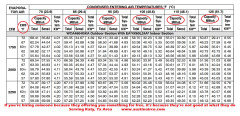
But I thought a heat load calc would solve all my problems? It's so easy anyone can do it... but if you choose anyone? It's you who gets to live with it.
If you don't like what I say now... you certainly won't like what I have to say later.
I service the Katy, Texas area.Charles Ross Homes
2 years agoRay,
The table you posted states the cooling loads (both sensible and total load) for a particular condenser coil model operating in various temperature conditions. It doesn't size the equipment capacity required for a particular climate or structure; you need a load calculation for that. The heating and cooling loads are properly determined by an ACCA manual J calculation, not a look up table or a 400 cfm/ton rule of thumb.
Once the loads are calculated, the equipment is sized using manual S and the ductwork designed using manual D. Then the designer can provide a variety of options for the client to consider from single-stage to multi-stage and VS. Your statement
"A single speed or even two speed AC in 80 degree weather is over sized."
is false and misleading. Sizing is about determining the required amount of heating and cooling. A single-stage heat pump can be properly sized to operate in a range of conditions. It does operate in on/off control mode and the run times will vary as a function of outdoor temperature. It will cycle more when the outdoor and indoor temperature differential is small.
"This is something a heat load calc will never attain (load matching from above) because of the changes in building codes over the years... what is made now versus what was made when your house was built is completely different, even here in Katy, Texas."
Nope. A manual J calculation takes into consideration the construction of the particular structure--from the insulation values in the walls and ceiling, the amount of air leakage, area of glazing, solar heat gain, etc. It doesn't assume anything about the construction; the designer needs to input all the information. Accordingly, the calculated cooling and heating loads for a more energy-efficient home built to current codes will be smaller than the required loads for the same home plan built with less insulation, single-pane windows, higher air leakage, etc.
It is clear from your statements that you are not familiar with equipment sizing or HVAC design. Houzzers will be better served if you stop masquerading as anything other than an equipment change out artist with a one-size-fits all prescription.Austin Air Companie
2 years agoLOL.
27 years in HVAC, fixing builder grade problems. Thanks, I know better.
The opinion of a builder who lives in a mild climate? who cares? Why not stick to what you do Charles... go build something. I'm counting on it for future business. That's how builder grade works folks....
I love a good laugh, just as much as anyone, Charles.Elmer J Fudd
2 years agolast modified: 2 years ago"I wasn't referring to you Mr Fudd... Mr. I can wait 6 weeks to get an air conditioner running again."
I'm surprised my experiences made such an impression on you that you remember part of what I'd said but let me please clarify the facts.
About five years ago I decided to preemptively replaced two ~15 year old furnaces that were functioning fine but that I suspected were grossly oversized because of too frequent on/off cycling. I did some background checking and developed a list of three HVAC contractors with seemingly superior reputations and about each I received a recommendation from someone I knew. Each had consistently high online ratings. I chose the one who made the best in person impression. The bid was just below the highest quote and those two were much higher than the lowest one. The reputation of the one I chose was the best of the three. The downside was that they were booked ahead for about two months. They told me so on the front end. I was able to wait because I had functioning furnaces.
The job involved significant hard duct sealing and reinsulating and the installation of two AC systems from scratch - the house had not had air conditioning before. Load calcs determined the two old furnaces were each oversized by about 30%, They did a fabulous job, not only during the 4 days over which the work was done but also in producing two systems that function very well and provide much more comfort at lower cost.
Why do they have such a backlog? They're good. They're professional. They're customer friendly. And they get customer referrals because of it. After my job was done, I gave my project manager's name to a friend who said he wanted to have the two furnaces and AC equipment at his house replaced. He also had to wait about 2 months but was very pleased with their work.
The better trade contractors in my area are very busy, booked into the future, and often turn down bidding opportunities. It's an obvious red flag when a contractor has immediate availability for non-emergency work.
BT
2 years agoHa ha. We tossed ours after 12 years. White powdery substance from builder grade furnace. Had a Friday off, ask my wife if she wants a new furnace in the mid September, $799 + few parts to redo NG leg, $25 manometer have phenomenal furnace from the distributor - 4/hours of work. NO BACK LOG. After dealing with some "experts" no thanks. The distributor was trying to sell me an inverter. If we stay in this house I might go for it.
Charles Ross Homes
2 years agoIgnorance is bliss they say....and probably more frequently in Katy, TX than most other places.
dadoes
Original Author2 years agoI was push-mowing my deep ditches. I came in at 12:15p. Outdoor 81° on my thermometer, or 85°F on a weather reference. Indoor 78°F, 63%. I turned on the 1.5-ton window unit (it has not been run for several days). One hr later, 1:15p, LR temp is 75.1°F, 59%. Fifteen mins later, 1:30p, 74.9°F, 59%. 15 mins later 74.9°F, 58%. 15 mins later 74.8°F, 57.5%. Shut it off now. Imagine what 3.5 more tons can do!
Elmer J Fudd
2 years agolast modified: 2 years ago3.5 tons more might run 15 minutes on, 15 minutes off, with indoor humidity of 65% or more.
dadoes
Original Author2 years agoYeahbut, I said 3.5 tons more [than the 18K window unit] ... 5 tons total, although that'd be for the whole house, not just the LR/Kt/DR/Office area that the window unit is covering.
Elmer J Fudd
2 years agolast modified: 2 years agoYes, but I remember you saying that the house is 2350 sq feet. Without a calc, sizing is a guess but 5 tons seems like too much, everything else being equal.
Austin Air Companie
2 years agoI was push-mowing my deep ditches. I came in at 12:15p. Outdoor 81° on my thermometer, or 85°F on a weather reference. Indoor 78°F, 63%. I turned on the 1.5-ton window unit (it has not been run for several days). One hr later, 1:15p, LR temp is 75.1°F, 59%. Fifteen mins later, 1:30p, 74.9°F, 59%. 15 mins later 74.9°F, 58%. 15 mins later 74.8°F, 57.5%. Shut it off now. Imagine what 3.5 more tons can do!
But your outdoor isn't going to remain at 81F OAT during summer months. The other is that this window unit is oversized for the room you have it in--- in addition to OAT being below design temp. How was it sized? Did you run a heat load calc for that room? People typically don't do that, they just grab the biggest window unit they can find that will fit a window in the room.
We have an accronym for this: GIGO, garbage in - garbage out. You're conducting experiments with garbage information. Typical household rooms range from 9k btu to 12000 btu. Certainly you can "cheat it" by saying this room is open to other rooms, but via ducts that's not how systems are sized "by cheating" unless someone is just trying to cheat you as it were... heat loads are easily manipulated. Even without being manipulated it's still a guess, because of the info someone is going to "choose" to perform the calculation with.
My suspicion is that this house may need just over 4 tons, nothing is made over 4 tons, other than 5 tons which is what you have. (At the time your current heat pump was installed) How many 1000's of homes I've been in over the years similar to yours? In nearly the same climate? Experience... the nitty gritty details that come from years of doing, not just yacking about it.
Pull down for a typical air conditioner for Texas is typically several hours upto waiting for the sun to set. (The heat is real here, not imaginary like 'several' people commenting in this thread about things they have no idea about. Houston is often coined the AC capitol of the world. I chose to live here from a multitude of choices over 20 years ago. I didn't stop there, I started my own company because of those people who liked to "use me" and not in so fun ways. It's easy for a boss to say, here you can run this free estimate and waste your time, then I can demerit you for not selling "what I want you to sell" put a big collar around your neck and zap you occasionally. Things like "contractual obligations" the builder is fond of....)
Additionally there is very little cost difference (equipment cost) from 5 ton to 3.5 ton or even 3 ton. Typically it might be as little as a few hundred dollars. So if you're thinking is that you are going to save a lot of money by undersizing? no. The savings come from efficiency.
You pay for efficiency... Like Inverter AC. So as the Bosch as an example you buy the 5 ton, configured at 4 ton... it has the ability over shoot with over capacity built into it... something like 110%-120% of rated capacity. But you only get to that point... *if it's needed* Which is something unique about Bosch Inverter. If you're wrong with the 4 ton config? The Bosch can be reconfigured back to 5 ton. You can't do that with any other machine I am aware of. Experience? what is it worth?
If this house needs 3.5 ton? You go to a 4 ton inverter. 2 speed? you go to a 4 ton 2 speed? Why? They don't make a 3.5 ton 2 speed or inverter either one.
But you want a heat load calculation to be specific only to turn right around and defeat the whole reason for doing it?
How about now? Learned something?
--------- another example of cutting costs at your detriment --------
You need a printer, you go to the store buy a cheap printer. You print 50 pages run out of ink. They charge $100 a pop for new ink cartridge. What? the printer didn't even cost $100!
You buy a new machine based on $money$ --- your electric bill comes every month. You could cut this electric bill in half (at least) with Bosch inverter. (a way to pay for it.) The problem: They aren't available just yet... hopefully by the start of the new year 2022.
Another problem: You're not sure if you are going to keep this house or not.Charles Ross Homes
2 years agolast modified: 2 years ago"My suspicion is that this house may need just over 4 tons, nothing is made over 4 tons, other than 5 tons which is what you have. (At the time your current heat pump was installed) How many 1000's of homes I've been in over the years similar to yours? In nearly the same climate?"
Guessing is what gets both homeowners and HVAC contractors into trouble. Guesses typically result in oversized equipment, and poorly performing systems. Each home needs to be individually evaluated with respect to the requirements for heating and air conditioning and ventilation. That's not a new idea, and it's required by the International Residential Code which forms the core of most statewide building codes.
"The 2015 IRC section M1401.3 and IECC R403.7 (and all energy and mechanical codes going back at least 20 years) require heating and cooling equipment to be sized in accordance with ACCA Manual S based on building loads calculated in accordance with ACCA Manual J or other approved heating and cooling calculation methodology. The code also requires that duct systems be designed and installed in accordance with ACCA Manual D and Chapter 16 of the IRC." Source: https://eepartnership.org/program-areas/energy-codes-2/energy-codes/houston-field-study/hvac-sizing-factsheet/
Please note the above link is from SPEER which is promoting the adoption of energy-efficient practices in Texas and Oklahoma. That's close to home if your home is in Texas.
Austin Air Companie
2 years agoI've been incorporating engergy efficient practices for over 20 years in Texas.
What would you call a 20 SEER Inverter Heat pump? That can cut your electric bill in half? chopped liver?
Come on Charles, go build something...Charles Ross Homes
2 years agoBuilding codes are designed to ensure occupant safety as well as a level of sustainability and energy-efficiency of habitable structures. While they are required for new construction, most replacement work doesn't require a permit, nor does it require inspection. I'm betting, Ray, that you haven't opened a code book nor seen an inspector on one of your replacement jobs in Texas--ever.
A high SEER heat pump or air conditioner that isn't properly sized or is coupled with poorly designed or poorly installed ductwork doesn't promote energy-efficiency. It's greenwashing.dadoes
Original Author2 years ago1) I did not buy the window unit. Per previous post, I borrowed the spare 17yo (per serial number) unit from a neighbor immediately upon failure of the central system at end of August. It handled the LR area to acceptable comfort for the duration. You're aware of the weather during that period, Sept & Oct.
Certainly you can "cheat it" by saying this room is open to other rooms, but via ducts
2) Ducts? What ducts? As stated previously, the LR area is an open-space configuration. Comprising the front & back door entrances, LR, kitchen, dining area to one side at the front, and a doorway into a small office room at the other side at the front. A support wall with a 6-foot wide x 40-inch high pass-through defines the kitchen space, open at the back with a waist-high bar. The airflow is turned toward that wall and the dining area. It flutters a paper towel roll on the pass-through and I can feel it at the table. It would blow straight ahead at the front door and office doorway.
3) No contractors are found here on a search at Bosch, or feature it on their web sites.
4) I asked both contractors for a Manual J. They balked, citing their one-ton-per-500-sq-ft tenet. I asked about 4 tons based on my 17 years of apparently irrelevant "experience" with the 5 ton in this house. Both balked, citing one-ton-per-500-sq-ft. The online Manual J with my measurements calculated 2.5 to 3.2 tons cooling depending how I skew the design temps. What do you imagine the contractors would say if I told them about that? They both said without being asked that they don't recommend inverter units. Why so?
Another problem: You're not sure if you are going to keep this house or not.
LOL. I never said anything in that regard.
I give up on the scuffle. Choose a 5 ton 2-stage.
Austin Air Companie
2 years agolast modified: 2 years agoWell a window unit borrowed or bought: was not sized properly for the area you are trying to cool. That was the point, but you just want to argue... when the point was: It's not sized properly -- yet you claim you know what size you need based off what? an over sized window unit?
What ducts? the ducts to your currently defunct system. If you don't have ducts in the room the window unit is in? Then maybe a complete redesign is in order? What is a guess from a forum board worth these days? You can feel the air flow / see it flutter paper towels? Ok there are people I know that don't view comfort as residing in a wind tunnel. I am one of them.
If having continual air fluttering paper around is your thing... by all means go for it. I don't view that as a function of "comfort". Eyes wide open so you understand better what we are talking about. Perceptions.
3) No contractors are found here on a search at Bosch, or feature it on their web sites. Yet you know of one here, but you want something for nothing? Ironically the shoe is on the other foot now. So you clearly see how this works / or doesn't work. You want to do it right, but don't want to pay for it? Any other excuse?
They both said without being asked that they don't recommend inverter units. Why so? They require knowledge to work on them. In my experience that is the only reason. They hire new kids often don't want these kids getting electrocuted and fried at your house. The odds those new kids make it to my tenure? not likely. See when you have to reshuffle your technical staff regularly that's what you get. How to keep payroll low? Keep hiring green horns. Simple as the day is long.
But I want a "free" estimate? call in the green horns. They give you a free estimate because a lazy boss / manager that has an HVAC license would rather sit in an air conditioned office and bark orders to techs that sent in their $20 to TDLR to become an AC tech. The hidden cost of *free*.
A high SEER heat pump or air conditioner that isn't properly sized or is coupled with poorly designed or poorly installed ductwork doesn't promote energy-efficiency.Part right Charles, poor duct work doesn't do anything good. A high SEER heat pump alone should be sized properly (single speed and 2 speed machines), however an inverter heat pump like the Bosch 2.0 (20 SEER) as already mentioned ramps up and down as needed. As long as air flow / duct work is good --- you can't really over size it, only under size it. But undersizing would only come into play on the hottest or coldest days (if configured as a heat pump for cold days). The whole reason you would want AC in the summer in Texas --- not to be too hot on the hottest days? To low capacity will give you that.
An Inverter like the Bosch 2.0 checks all those boxes and then some...
I give up on the scuffle. Choose a 5 ton 2-stage.
So everyone here sees the complexity of sizing a system via a manual J or what ever method you decide. The objection of the house being sold is one I handle quite often -- so I wanted to see a response on that rather than to merely guess. The end.
So who learned what? LOL. All in a day's work... but this is "so easy" they said.
I service the Katy, Texas area.
mike_home
2 years agoI learned the reason most houses in Texas have a 5 ton condenser is because no one makes a residential 6 ton size.
Austin Air Companie
2 years agoI learned the reason most houses in Texas have a 5 ton condenser is because no one makes a residential 6 ton size.
LOL, but they do... twin two 3 ton furnaces together / two 3 ton AC condensers / two 3 ton E-coils. (2 stage AC, 6 tons... notice I didn't say "speed")
Viola... a 6 ton system. (or two seperate 3 ton HVAC systems.) all you need beside that is the room to install it.
Charles needs the work --- he can build the addition to house the twinned system. LOL.Charles Ross Homes
2 years agoNot so fast, Ray.
There's a difference between a condenser--which is a single component of an HVAC system and a complete HVAC system. @mike_home is correct that the largest residential condenser unit is 5 tons (60,000 BTU/hr capacity.) You can configure a system with multiple compressors and multiple evaporators which is larger than 5 tons in total capacity, but the capacity of any one condenser won't be larger than 5 tons unless you go to light commercial or commercial units which are available in capacities greater than 5 tons.dadoes
Original Author2 years agoI still have not learned anything new.
I did a measure of the master BR/BA/closets wing and the spare BRs/BAs/closets/hall wing. And the laundry room which is behind the kitchen although the doorway is part of the larger area. Those totaled together as 999.5 sq ft, say 1000. A 1.5 ton window unit is oversized for the remaining 1350 sq ft? Hmmmm. Perhaps the quoted sq ft of the house is wrong ...
Surely there are ceiling ducts but what relation do they have to the function of the window unit? The point of the fluttering paper towels and feeling airflow at the dining table is that the window unit IS covering the entire area as I described it, not confined to the just "living room" space as someone apparently envisions it.
Five of the contractors in this local area of towns range in timeframe from 1959 to 1983. The newest is 1992. I'm not knowing details of their staffs but seems reasonable a few young(er) employees may be involved ... people move, change jobs, retire, die.
mike_home
2 years agoDadoes,
I sympathize with your frustration. You want to install the proper equipment, but the contractors near you want to install 5 ton condensers. It has taken more time and energy to write all these posts then it takes to do a heat and cooling load calculation based on the Manual J requirements. Even if you were able to convince one of these contractors to install a 4 ton unit, which seems to be the correct size, they would not want to be responsible if you had any compliant about your new HVAC system.
The bills being voted by Congress will have several climate change requirements. I am not a fan of regulations, but perhaps buried in one of these bills will be a requirement where all new and replacement HVAC installations have a Manual J calculation.
Elmer J Fudd
2 years agoManual J load calculations and HERS testing after the work is done are required in my state (California). There's a long list of innovative law changes and requirements over the years for which California was the first to put in place, that are ultimately adopted by other states.
I believe building and energy codes are the domain of state and local governments and not the Feds. And they do differ from place to place. I'm not sure if Congress can impose its will on diversity of codes that exist.Charles Ross Homes
2 years agoAs noted in a previous post, manual J, manual S, and manual D calculations are required by the International Residential Code and have been for some time. While new construction work requires permits and HVAC calculations are reviewed as part of a permit application, permits and inspections generally aren't required for HVAC replacement work.
While replacement contractors are technically subject to the same code requirements, there's nobody checking on them. That explains why so many are clueless regarding the need for and how-to perform the code-required calculations. "Chuck in a truck" is, unfortunately, able to exist and consumers are worse off for it. As @Elmer J Fudd noted, California has enacted a number of regulations which have the potential to improve indoor air quality to the benefit of consumers and the detriment of marginal HVAC replacement contractors. These will find their way into other state's building codes, but the process is a slow one.Elmer J Fudd
2 years agolast modified: 2 years ago"permits and inspections generally aren't required for HVAC replacement work."
I guess this varies by location, they're for sure required in California. It was cool, the results of the HERS testing were transmitted electronically to the Permit office immediately when the testing was done and all the data entered into the tablet resident software. I would expect in places where the rules become more stringent in this way, enforcement of the energy efficiency rules may put in place new permitting requirements if none were previously required.
Of course there are people who do work, either on their own DIY or by hiring less than forthright contractors, that requires permits but they don't get one. There is enforcement in one way - when a home is sold, a required seller disclosure is to answer the question "Was any work of a type requiring a building permit done, without a building permit being obtained?". Other than in super hot markets when anything goes, a buyer can insist on having a retrospective permit pulled and inspections done and having non-compliant work fixed. Or, if such a question is answered untruthfully and the buyer later learns of it, they can sue the seller to pay for remediation and all costs and for consequential damages and such suits (in my experience) are usually successful.
(A guy I know bought a spacious second home that had a large wing that had been added on. The guy learned about 6 months after closing, I'm not sure how, that this substantial amount of work (something like 2000 sq feet) had been done without any permits pulled and that the seller's disclosure answer on this question had been untruthful . He sued and was successful in getting the seller to pay for a very expensive complete tear down and rebuild. All permitted, of course, and the first step after the court decision was to slap a massive lien on the seller's new home to act as a guarantee that the rebuild job would be paid for by them.)Austin Air Companie
2 years agolast modified: 2 years agoSurely there are ceiling ducts but what relation do they have to the function of the window unit? The point of the fluttering paper towels and feeling airflow at the dining table is that the window unit IS covering the entire area as I described it, not confined to the just "living room" space as someone apparently envisions it.
A window unit is a room appliance, not a multi room appliance. So the mere fact that you can feel it into the other room says it's oversized.
You can continue to argue, think you know what you obviously don't -- of course you will learn nothing new from that. Stubborn people must live this out on their own. Maybe you learn in another 15 years?
Experience what is it worth?
The comments about running load calculations are still at the mercy of the information being fed into the calculation. Just to say you did it, doesn't mean it's right. I think I've laid out why there are problems where no one in the heat load calc department wants to admit there is a problem? That's a problem.
The 2015 IRC states such and such about calculations... but this is 2021 going on 2022... we are talking about Bosch Inverter driven heat pump. This inverter driven heat pump to my knowledge did not exist in 2015. (Split system ducted for those of you who want to chant mini split this and that...)
As a Licensed HVAC contractor I more or less take an oath to do no harm. The E at the end of my license stands for "environmental" -- the 'environment' is the structure. So while there is no primary 'permitting function' for the majority of areas I service' doesn't mean much in the larger schemes of things. Why?
My company name is Austin Air Companie, My last name is Austin. I only have one name. Now compare this to chuck in a trucks if you want... what naming scheme they use if they get into trouble just close one company, open another in a new made up name. People like to dish out grief without fully thinking. Ironic in a thread claiming there's nothing to be learned here.
HVAC companies in my area many of them are known for changing names, but you'd never know this if I didn't tell you.
27 years in HVAC, 14 years running my own. Never changed my company name once.
Does that mean everyone will want to use my services? nope. Only the few and the proud ( I can't service them all). The others will claim references to chuck in a truck and other related nonsense. Probably better those go to the competition anyway.
I service the Katy, Texas area.
------------ How you get paid for the better system --------
You're replacing your HVAC system --- the difference in cost from a two speed to an Inverter is not known for this particular structure. Not even the cost of the 2 speed is known. What I do know...
There will be savings on consumption much greater via an Inverter. The difference in cost of the inverter from the 2 speed is made up in a short amount of time due to these efficiencies and how it functions. You then have a "better system", that better system provides you better comfort.
With an Bosch Inverter heat pump configuration: The ability to heat down to 5F. --- A two speed heat pump will come no where close to that performance. If you shave 50% of the time those electric strips run (during defrost of the heat pump) just that efficiency gain alone will pay for this in spades.
Better dehumidification in the summer, not to mention shoulder seasons. But because this person resides out an away from civilization and better choices... he either pays someone to come out there or settles for what is available in the area this structure is located.
Typical electric bill savings average at about 50% of whatever you're paying for electric use now. (when there is one HVAC system in the home) -- I show this in the video posted in this thread.
The efficiency that I talk about here -- results in actual $$ in your pocket. The more you use it, the better it will pay you back.
If your settings are 80 in summer, 65 in winter in Texas--- the inverter is probably not for you.Charles Ross Homes
2 years agoThe 2015 IRC states such and such about calculations... but this is 2021 going on 2022...
The residential building code review and approval process is a painfully slow process. Codes and their adoption vary from state to state (the code currently in effect in Virginia is the 2018 code.) What's relevant to this thread is that the building code has required calculations for HVAC equipment sizing for some time--for both new construction as well as replacements. The number of treads here on houzz.com pertaining to HVAC equipment sizing for replacement units suggests the majority of replacement contractors aren't aware of the code requirement even if they know how to properly size equipment (I wouldn't bet on it.)
"we are talking about Bosch Inverter driven heat pump. This inverter driven heat pump to my knowledge did not exist in 2015."
We're not talking about the Bosch inverter-driven heat pump, Ray; you are. It's your one-size-fits-all prescription.
Inverter-controlled heat pumps aren't new. Inverter-controlled mini-split heat pumps (both ductless and ducted) have been around a long time, albeit not as long in the U.S. With regard to conventional split-system heat pumps, Carrier introduced its "Infinity" inverter-controlled heat pump in the U.S. market in 2011.Austin Air Companie
2 years agoWe're not talking about the Bosch inverter-driven heat pump, Ray; you are. It's your one-size-fits-all prescription.
The thread is talking about heat load calcs / performance / efficiency.
So with Bosch Inverter heat pump hitting all those subjects in the spades department... what temp does a run of the mill single stage or two stage heat pump for that matter fall off a proverbial cliff in heat mode?
30F-35F Is pretty much it (single speed or two speed), after that it's predominantly electric strip heat or dual fuel set up using natural gas or propane. So you have nothing good to look forward to with that.
Meanwhile the Bosch heats down to 5F. Performance?
This side of the equation in this post only considers heating, doesn't get into the air conditioning side of the spectrum where it beats out there as well. I have a Bosch Heat pump inverter at my own house. It competes with the best of the best and in my opinion beats them all. Is it perfect, no... but as close as you can get currently all things considered. I lay out the pros and the cons in the video. Tell it like it is.
One size fits all: No I said if your set points are 80 in the summer / 65 in the winter the Bosch Inverter is probably not for you. It would be like buying a car for the sole purpose of saving money on gas and then not driving it.
Trouble reading again Charles?Charles Ross Homes
2 years agoRay,
"Is the calculator wrong? Why do I need 5 tons? " is the OP's first question.
Instead of addressing calculations you chose to use your air time to berate the OP and then launched into your oft-aired commercial for your favorite Bosch inverter heat pump. Your first comment on the thread--which has since been deleted-- was:
"Your current system has heated / cooled your home for over 15 years, but only because it's broken are you now worried about the size of it?"
These posts are about helping houzzers. If you want to use them to advertise your favorite product or your services houzz has an advertising plan you can purchase.Austin Air Companie
2 years agolast modified: 2 years agoCharles this is an on site, in person job.
I don't do service requests from my office. On site, in person only.
Pretty sure I've made this quite clear over the years. Yet you still bark the same old nonsense? Why?
HVAC requires licensing in Texas and many other areas it's not DIY job.Austin Air Companie
2 years agoCharles, I don't consider fine dining and fine accommodations a necessity. But I do want to be compensated for my time.
What I say and what I do here? I could ask you the same thing my man. Why would a builder need to come here? Same difference really. I guess you forgot to think about that huh?
You like to point fingers at what I do, pay no attention to what you do. You know rules for thee but not for me? Ring any bells Charles? LOLdadoes
Original Author2 years agolast modified: 2 years ago2-stage 5-ton Trane installed 1/4/22.
4:00 am 2/4/22, current outdoor 25.5°F. Setpoint 68°F. Far-end bathroom w/ 36.75 sq ft glass block windows is 65°F. Warmer-end bedroom is 69°F. Unit running on 2nd compressor stage heating. Unit has been running near-continuously since afternoon of 2/3/22 after the latest arctic blast arrived. Early evening went to cycling between 1st and 2nd compressor stages. Initially on 2nd stage for 10 mins, periods increasing as the ambient temp dropped.
Heat Differential Stage 2 = comfort.
Finish with High Heat Stage = no (so it drops back to low stage when the "comfort" droop is satisfied per the thermostat algorithms, does not stay in high stage to fully satisfy the setpoint and shut off).
Backup Heat Droop = 3.0°F (has not engaged best as I know).
4:59 am 2/4/22, current outdoor 25.0°F. Unit cycled OFF. 5:22 am, cycled on.
mike_home
2 years agoThis posting is getting long, so you might want to start a new one.
Which air handler, heat pump, and thermostat did you end up installing? Does the thermostat have an outdoor temperature sensor or can it get the local temperature via an internet source?
It seems like the heat pump when in low stage is struggling to keep up with the heat loss of the house when the outdoor temperature is 25 F degrees. It looks like a control problem and the algorithm to manage the low and high stages, and the back up heat strips needs to be modified. A key input to the algorithm is the outdoor temperature in my opinion.
dadoes
Original Author2 years agoWhy do you believe it's struggling? I have the auxiliary droop purposely set at 3°F to 1) avoid using it, and 2) make it obvious by the room temp if an adjustment is needed.
My main point is based on a statement above that no non-inverter heat pump can maintain the desired room temp at ambients below 35°F to 30°F without engaging the backup. Perhaps 68°F is a bit of a low room temp setpoint but the system is maintaining it ("comfort" is defined as within 1°F of the setpoint), and even reached it and cycled off at 25°F ambient without use of the auxiliary/backup.
Honeywell VisionPRO 8000.
sktn77a
2 years agolast modified: 2 years agoDon't see a question in your post from 2/4/2022. Do you have one?
"My main point is based on a statement above that no non-inverter heat pump can maintain the desired room temp at ambients below 35°F to 30°F without engaging the backup."
I guess that puts that statemen to bed, then.
dadoes
Original Author2 years agoTwo questions, then.
Why an advisory to start a new post on a follow-up by the original poster?
Why is a question necessary?
mike_home
2 years agodadoes,
I misunderstood the reason for your post. When I read it I thought you were concerned about a potential problem . This is why I suggested a starting a new post. Now I understand this was meant to be an update on the performance of a non-inverter heat pump.
kevin9408
last yearlast modified: last yearI don't think some understand small towns in texas (or any state). Just because they adopt codes doesn't mean they enforce them, or if the town people gives a flying flip about them. Many don't have an enforcement department or even the budget for one.
The small in Texas I moved from in 1990 had no code of ordinances but I see they copied an ordinance from some other city in 2012 (maybe forced by the state), but there is no code enforcement department or a budget to have one. I drove through it last February and it was in miserable shape and still only a one cop town with a Mayor, 2 council members, town secretary and one do it all maintenance man. Population when I left was 1200, today it's still 1200 inside city limits but 10 times this outside of the limits, (I know this and a lot of unincorporated space between towns). Permits aren't pulled, people do as they did for 150 years and along with every small town throughout the state of Texas, and many other states to boot.
Most permits exist for the sole purpose of generating revenue and nothing but money grabs and social extortion. The Town I lived in has a code now but no means to enforce the code or any desire to do so, and maybe just by chance Ray's service area is also the same. Everyone knew everyone where I lived and what they did, and when something needed done you didn't call a company you called a friend of everyone who worked in the trade.
You people are on a witch hunt but live with the big city devil of liberal progress.
Elmer J Fudd
last year" Most permits exist for the sole purpose of generating revenue "
This is very, very wrong.mike_home
last yearMike_home will circumvent rules to help DIY's
Ray,
Can you explain what rules I am circumventing?
Charles Ross Homes
last yearThe value added by the permitting and inspection process is likely to vary quite a bit across the country. In the municipalities in which we build, a lot of value is added for the homeowner. Plans are very thoroughly reviewed and construction is carefully--albeit not comprehensively-- inspected. I figure the plan review fees and permit fees may be sufficient to cover the cost of field inspections, but they're not sufficient to cover any office overheads and they're certainly not generating net revenue. With respect to HVAC, all of the municipalities we build and remodel in require ACCA manual J calculations and duct designs to be submitted by the mechanical contractor at permit application. Blower door tests and duct blaster tests are mandatory for new construction.
kevin9408
last yearlast modified: last year" Most permits exist for the sole purpose of generating revenue and nothing but money grabs and social extortion." I meant to say "some permits" so my mistake, but follow the money!
Nearly all adopted codes exempt replacing parts and doing repairs on existing mechanical equipment, and also replacing existing electrical outlets and switches, light fixtures and emergency plumbing repairs. But the code requires a permit to remove the electrical outlet cover on a exterior outlet and reinstall the cover when residing the house and no more involved than replacing a indoor outlet. The homeowner can do it with a permit but the siding company can't do it by code even with a permit. Nope, an licensed electrician must do it (if the homeowner can't) adding several hundred dollars to the job cost, but I've never seen a house siding company call an electrician.
Many unnecessary code changes are the result of lobbyists for the trades to pad the pockets of their industries, and many are generated at the local level just to generate revenue for the city, like requiring a permit to replace a broken dishwasher. Probably the most violated code in the country is the requirement to get a permit to replace a water heater.
I'm still waiting for an inspection for my new roof installed in 2006 after calling for one, and watched my neighbors roof get inspected by the city from inside his truck from the road. The next time you get a A/C unit replaced make sure the installer gets a permit, and ask him the name of the licensed electrician that will connect up the electrical, and then add $500 to the cost. I don't believe I've ever heard of a HVAC installer call an electrician but to be safe INSIST they do! What a joke.
Austin Air Companie
last yearTo Kevin's point and to illustrate another one... While I was working for another company over 20 years ago I sold a job in the city limits, so obviously the company pulled a permit.
The job was installed, the inspector flagged the job saying the condenser out back didn't have enough space in between other condensers and or the wall of the building. The building was an older apt. complex that had been converted into a condo with in the city limits.
The area where the condenser was installed was a limited area cove with about 5 other condensers (6 total), the one we installed was in the middle with no room at the inn.
I went out there... put my hand on the condenser... said I adjusted it --- wrote a invoice for it and viola --- the permit issues were resolved. Oh so you lied... yeah what is there to do? what is there to solve with no room? The permit inspector knew that front and center.
Remember this was at least 20 years ago.
No complaint from the home owner, no complaint from the city after I went out there and put my hand on it and wrote out an invoice.
Fast forward to 2023 and SEER2 regs --- these condensers (likely 3 ton for a condo) are now 3ft x 3ft wide. The previous versions were any where from 24 x 24 or 29 x 29 --- so another 3.5 inches on all sides.
From the builder: notice what he says: In the municipalities in which we build
The builder somehow can not get the idea I'm not building (new) anything. New construction is completely different. Everything is new, everything follows the codes of the time in which the building is built.
Why all of this rebuttal: THE BUILDER SHOULD CONCENTRATE ON WHAT HE DOES, not worry about things he cannot comprehend. He's in Virginia --- what the discussion is about is Texas.Charles Ross Homes
last yearIt's nothing short of ironic, Ray, that your home state of Texas allows homeowners to install their own HVAC systems.
"A licensed HVAC contractor must acquire all permits and perform all work. Exception: State of Texas allows homeowners to install an HVAC system on properties that they own, live in and homestead..." source: Residential HVAC Requirements, City of Lewisville, TX 11/13/2020
Mike's insights and advice might be helping Texans who are installing their own HVAC systems--maybe even your next door neighbor.

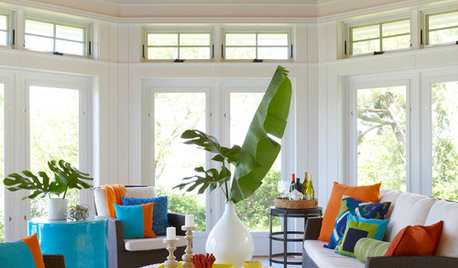
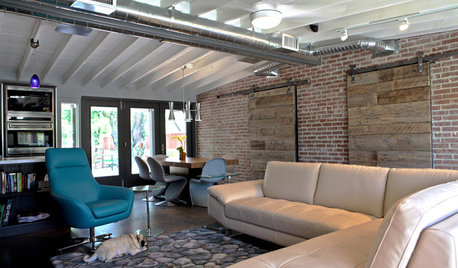
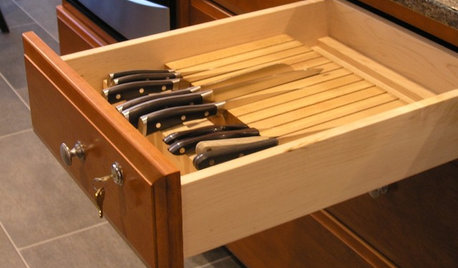
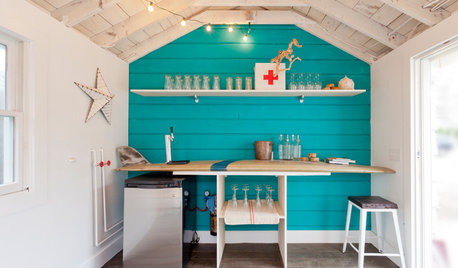
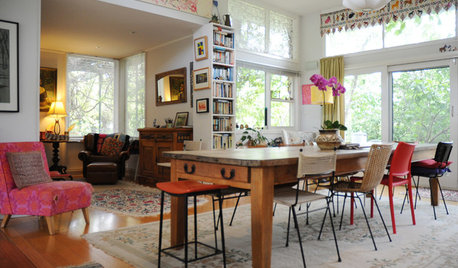

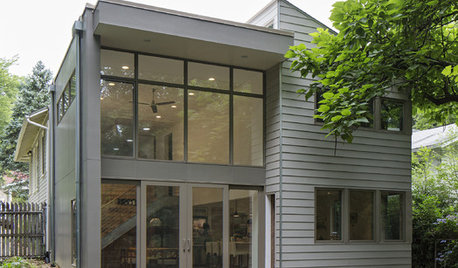
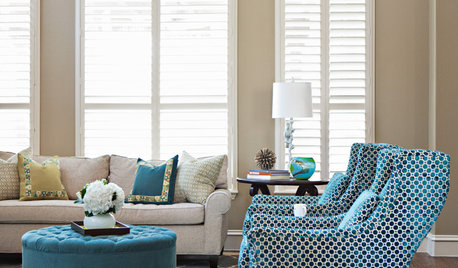
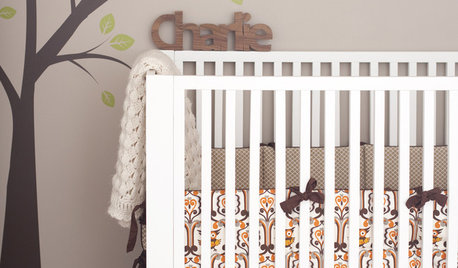




Charles Ross Homes